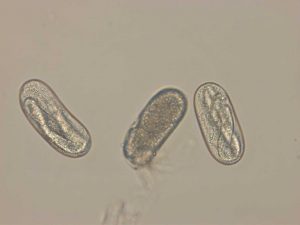Spring SCN Testing and a Research Opportunity for Ohio Growers
By Horacio Lopez-Nicora, Adapted from C.O.R.N. 2022-13
KNOW YOUR SCN NUMBERS, OHIO!
While it is important to know about the presence of SCN in a field, it is more important to know the SCN numbers. It will determine the best management strategy. It is important, therefore, to Test your Fields to Know your SCN Numbers.
In the spring, either before or at planting, is a good time to sample for SCN.

A soil test in spring will reveal if SCN is present and if so, at what levels. If you are planning to collect samples for soil fertility or participate in an on-farm trial that requires soil sampling, a subsample can be used for SCN testing.
With funding from the Ohio Soybean Council and The SCN Coalition we will process up to TWO soil samples, per grower, to be tested for SCN, free of charge.
Download and complete this Soil Sample Submission Form and mail your samples to:
OSU Soybean Pathology and Nematology Lab
Attn: Horacio Lopez-Nicora, Ph.D.
110 Kottman Hall
2021 Coffey Rd.
Columbus, Ohio 43210
A GREAT OPPORTUNITY TO UNDERSTAND SCN REPRODUCTION IN OHIO
Additionally, with funding from the Ohio Soybean Council, we invite growers, researchers, and extension educators to help us better understand the relationship between SCN reproduction, soil texture, and soil health measurements. It doesn’t matter if you will plant soybean or corn, if you are a grower in Ohio, you can still participate in this research.
Sampling a soybean or corn field in spring (before or at planting) will reveal the initial population (Pi) of SCN. Sampling that same area at harvest will reveal the final population (Pf) of SCN. From these soil samples, edaphic parameters including nutrient analysis (pH, organic matter, CEC, extractable nutrients), soil texture, and biological indicators (POXC, respiration, protein) will be obtained.
For each field, SCN reproduction factor (RF = Pf/Pi) will be calculated. If SCN population increased during a growing season, a RF > 1 will be observed; on the other hand, no increase or decrease in SCN population will take place if RF ≤ 1. At the end of the season, we will be able to relate SCN population dynamics to soil health parameters, soil texture, and crop planted.
For more information on how to collect and handle soil samples for SCN, visit our article here.